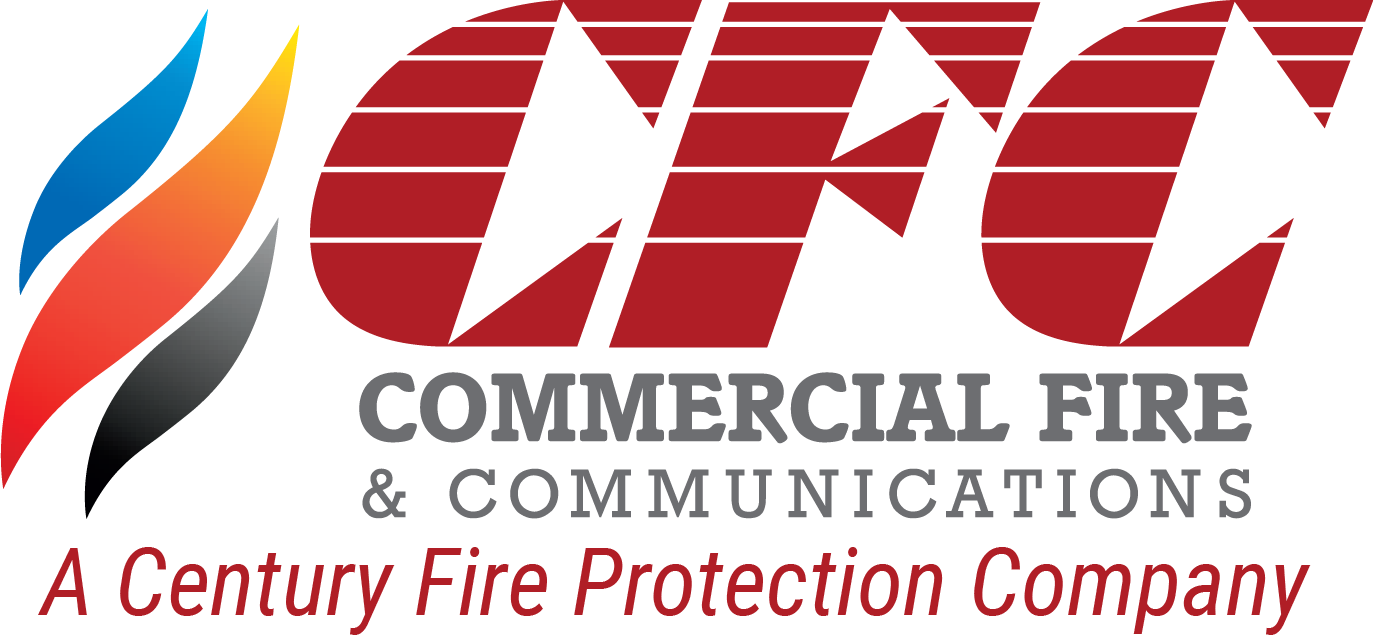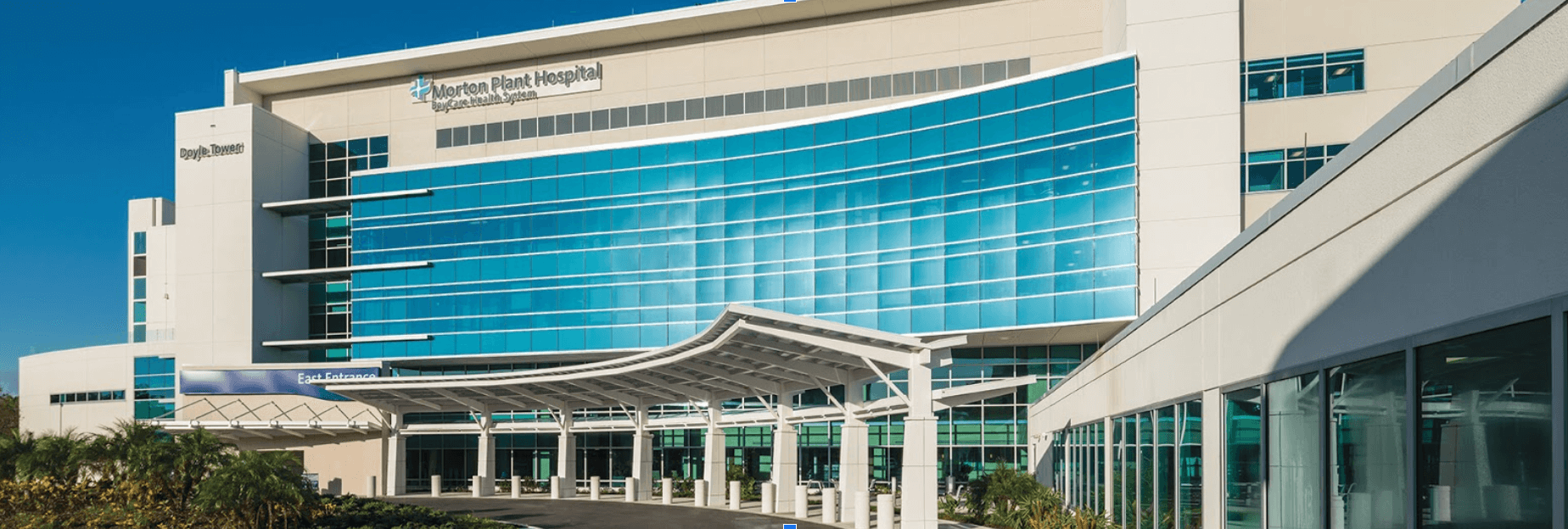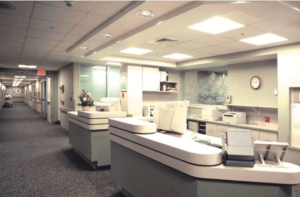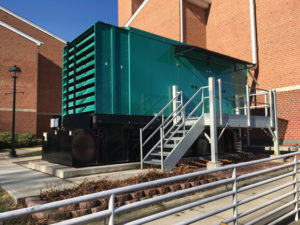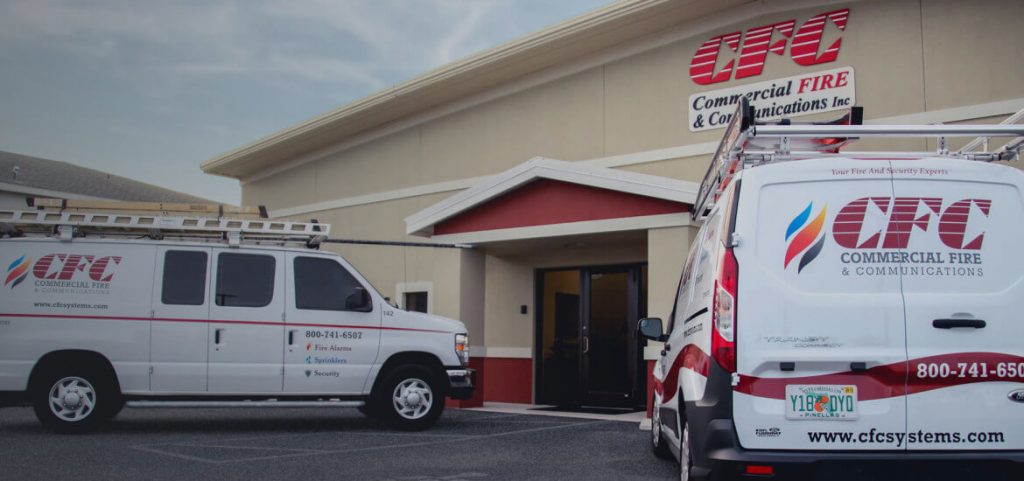To protect the health and safety of patients and medical staff, it’s vital that healthcare facilities make a strong commitment to implementing effective fire safety systems, practices, and procedures. Not only do medical facilities contain an abundance of volatile materials, but fires also pose a significant risk to patients who may be immobile due to their current condition.
CFC understands these risks and is committed to installing, servicing and monitoring the fire safety systems that healthcare facilities across Florida need to protect their people and property. Effective and code-compliant fire safety systems and services are designed to meet the safety standards set forth not only by local regulations but also the Florida Agency for Health Care Administration (AHCA). AHCA’s mission is “Better Healthcare for All Floridians,” and AHCA is responsible for the licensure and regulation of Florida’s health facilities.
NFPA 99
NFPA 99, Health Care Facilities Code, provides performance criteria for health care facilities, materials and appliances including electrical systems and fire protection. A major change implemented in the 2012 edition of NFPA 99 was a switch to a risk-based approach that takes into account the particular hazards posed to occupants, rather than the occupancy type approach commonly used in other NFPA standards to determine safety guidelines. This change occurred because traditional healthcare was delivered through facilities such as hospitals and nursing homes. Today many of those same procedures have migrated from hospitals to outpatient facilities and physicians offices. While the location has changed, the risk associated with those procedures has not changed. This means the life safety practitioner should not focus on building category but instead must focus on the level of risk to the patient and caregiver if that facility system is no longer available.
This risk assessment must address the fundamental question of whether injuries or deaths to patients or staff will occur should the system or equipment fail. The four risk categories can be summarized as follows:
- Category 1 – Failure of the system or equipment is likely to cause major injury or death to patients and caregivers.
- Category 2 – Failure of the system or equipment is likely to cause minor injury to patients or caregivers.
- Category 3 – Failure of the system or equipment is not likely to cause injury, but rather patient discomfort.
- Category 4 – Failure of the system or equipment would have no impact on patient care.
NFPA 99 does not provide an alternative to performing the risk assessment, and the risk assessment should be performed based on an assumption that without the protective measures required by NFPA 99 the system or equipment will fail. The probability or frequency of a failure should not be considered.
Application
Most building and fire codes define a healthcare occupancy as one in which four or more occupants are not capable of self preservation. However NFPA 99 does not have a minimum occupant load nor is capability of self preservation considered. Therefore, when patient care is provided (other than home health settings) the equipment and systems must meet the requirements of NFPA 99 regardless of the number of patients.
NFPA 99 construction and equipment requirements apply to new construction and new equipment. Existing systems are permitted to continue in use unless stated otherwise in the Code or the Authority Having Jurisdiction (AHJ) determines that continued use constitutes a hazard to life. All administrative requirements, such as preventive maintenance and monitoring requirements, apply to new and existing facilities, systems and equipment.
Fire Safety in Healthcare Facilities
Fire protection and life safety measures operate as part of a system. For example a fire sprinkler system will not work effectively without a fire alarm indicating that a fire is occurring and that action should be taken. Below we will review some critical concepts, as well as the relevant NFPA codes and standards that ensure fire protection and life safety systems work as intended in your healthcare setting.
Compartmentation
Compartmentation is a passive fire protection system that prevents or slows the spread of fire by walling it off. NFPA 101 outlines the construction and design requirements for medical structures and includes required fire ratings of walls, doors, corridors, operating rooms, special hazard areas and egress paths. Important for the healthcare facility manager is that these surfaces must remain intact to ensure their required fire resistance rating is in place. Any openings, such as those created by IT cables, ductwork or other trades must be properly sealed, fire stopped and inspected regularly.
Fire Sprinklers
Fire sprinkler systems are required in healthcare occupancies and must be installed following NFPA 13: Standard for the Installation of Sprinkler Systems. Inspection, testing and maintenance frequency and procedures are outlined in NFPA 25: Standard for the Inspection, Testing, and Maintenance of Water-Based Fire Protection Systems. Major fire sprinkler system components are required to be inspected quarterly, semi-annually and annually. In addition there are weekly and monthly inspection requirements for items that must only be visually inspected including fire pumps and private hydrants.
It is critical for a facility manager to ensure that inspection, testing and maintenance of a fire sprinkler system is completed by a qualified fire sprinkler professional and the recordkeeping is well documented to help ensure system reliability.
Fire Extinguishers and Fire Suppression Systems
Fire extinguishers are required throughout a healthcare facility and must be selected, placed, inspected, tested and maintained following the rules in NFPA 10: Standard for Portable Fire Extinguishers. Additionally, commercial kitchen and cooking facilities must be protected with a hood and fire suppression system which has inspection, testing and maintenance requirements outlined in NFPA 96: Standard for Ventilation Control and Fire Protection of Commercial Cooking Operations.
Fire Alarms
A functional fire alarm system is required throughout a healthcare facility. NFPA 72: National Fire Alarm and Signaling Code, outlines the installation and inspection, testing and maintenance requirements for these systems. Similar to fire sprinklers, it is required that quarterly, semi-annual and annual inspection, testing and maintenance is completed by a qualified and licensed fire alarm professional. However it is very beneficial for the facility manager to have a basic understanding of the operation of the fire alarm and what the various signals mean.
Generators and Alternate Power Sources
NFPA 99 defined the term essential electrical system (EES) as “a system comprised of alternate sources of power and all connected distribution systems and ancillary equipment, designed to ensure continuity of electrical power to designated areas and functions of a healthcare facility during disruption of normal power sources, and also to minimize disruption within the internal wiring system.”
Based on the risk category of the of the healthcare space (see above), an alternate power source such as a generator may be required to maintain the EES:
- Category 1 spaces require a Type I EES.
- Category 2 spaces can utilize either a Type I or Type II EES.
- Category 3 and 4 spaces do not require an EES.
When required, the EES must meet the requirements of NFPA 110: Standard for Emergency and Standby Power Systems. Testing requires the generator set to be run at least 12 times per year and the critical operating components must be visually inspected.
Safety Operations and Plans
Healthcare facilities must maintain emergency and evacuation plans and employees must be regularly trained on these plans and their roles within them. Quarterly evacuation drills should be conducted with the records maintained by the facility manager. All staff should be aware and sustain good housekeeping standards to allow for things like clear access to exits and well enforced “no smoking” policies.
CFC: Experts in Fire Safety
Today the United States enjoys a low frequency of hospital fires and an extremely low fatality rate. This is due to both the measures and systems outlined above as well as the stringent inspection and accreditation process for healthcare facilities in which organizations like AHCA place a premium on fire safety. At CFC, we know that installing and maintaining these systems is both necessary but also complicated and time consuming. We pride ourselves in the partnerships we create with our customers to bring fire safety solutions to their healthcare facilities throughout Florida, and we work together every day to design, install and service systems that meet their needs.
CFC has been working with Florida businesses and residents since the 1980’s to provide the high-level fire safety service, knowledge, and expertise needed to help them protect their lives and property.To find out more about our expert fire safety services, contact us today for a free consultation.
